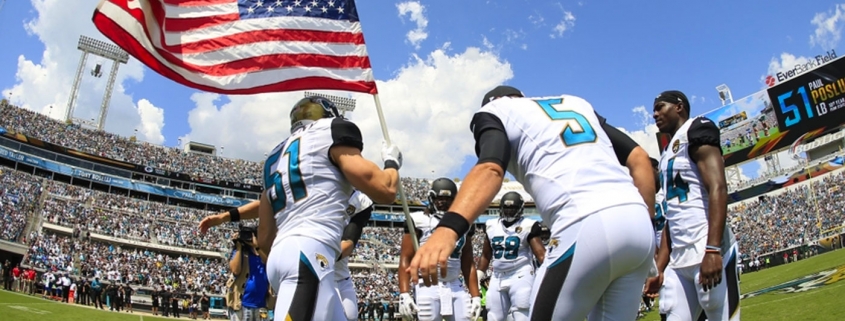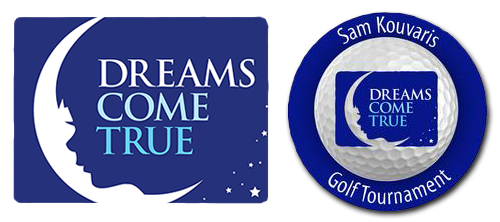Sports and The Star-Spangled Banner
As we celebrate the 244th anniversary of our Nation’s independence today, we’ll hear a lot of patriotic songs. It might be the only day we hear John Phillip Sousa’s “Stars and Stripes Forever.” We’ll sing along with Katherine Lee Bates’ and Samuel Ward’s “America the Beautiful.” And many of the celebrations will begin with our National Anthem, Francis Scott Key’s “The Star-Spangled Banner.”
Originally written as a poem by Key as he observed the U.S. Flag still waving over Fort McHenry at dawn after the Battle of Baltimore in September of 1814, the words weren’t set to music until later that year.
And it was a long time before the Anthem was tied to any sporting events.
The Star-Spangled Banner was first played at a sporting event on May 15, 1862, at a baseball game. It was played, sporadically at sporting events through the rest of the 1800’s and early into the next century. It gained some traction during World War I and even more during the run up to World War II as patriotic displays surged.
President Woodrow Wilson made “The Star-Spangled Banner” the National Anthem by executive order in 1916 but it wasn’t until 1931 that it became the country’s official anthem by congressional resolution. Post-World War II, it became common place to have The Anthem to be played before every sporting event.
Whether you stand at attention with your hand over your heart or exercise your right to free speech while The Anthem is played, there’s no question it’s become a part of American sports that’s not going away.
You might have noticed they’ve added “And gentlemen please remove your hats” when they ask everybody to stand for The National Anthem. Many team owners were dismayed that wasn’t happening and realized that guys weren’t being taught that at home nor in school, so they’ve added that as a reminder.
One night at a banquet I theorized that I might have heard “The Star-Spangled Banner” more than anybody else based on the number of sporting events I attended through the years as part of my career.
“I’d have to challenge you on that,” my friend and former owner of the Jacksonville Suns Peter Bragan, Jr. said from across the room.
We both laughed and the conversation turned to how many times we’d heard The Anthem.
I’m sure facility and field workers, JSO officers and probably security guards here in town have heard The Anthem more than anybody. They’re at every event at every venue, so Mary, the very kind elevator operator I see everywhere, probably hears the anthem nearly three hundred times a year.
Bragan theorized he heard The National Anthem about a hundred times a year during his thirty-one years as the owner of the Suns. Between seventy home games, listening to auditions for singers, going on the road with the team, a trip to major league parks, football games and other sporting events, ‘Pedro’ developed a routine around The Anthem.
“As the owner of the team I’d always know when it was going to happen,” he explained. “Usually, I was just at the bench in the stands. It was usually a pause and analyze what was going on in the stadium.”
During his four-year college baseball career, Bragan said he had a different thought process.
“As a player, for some reason, it always caught me by surprise. I’d do a quick turn to face the flag and take my hat off. As a player I did think about the founding of our nation, and the flag flying over the ramparts, George Washington crossing the Delaware and things like that.”
Pedro did ask me to sing The Anthem one night before a Suns game. Knowing that I occasionally front some of the ‘Big Bands’ in town, He put me on the schedule in mid-summer. It’s a bit disconcerting because in a space that large, there’s a half a beat between when the sound comes out of your mouth and when it comes through the PA system. You must concentrate on singing and not listening, that’s for sure.
How many times have you heard “The Star-Spangled Banner?” We used to have a chance to hear it every day when television stations signed on or off the air. The first and last thing on the air was the playing of our National Anthem. But stations no longer sign off, now on twenty-four hours.
While I thought hearing The Anthem about a hundred and fifty times a year during my career was a lot, my friend Rick Wilkins chuckled when I mentioned that number.
“At least two hundred times a year,” Wilkins said, recalling his eleven-year Major League Baseball career. “Between the regular season and spring training, plus the other events I’d go to with my kids, maybe more.”
With that as a regular part of the game, it has to become a part of any professional athlete’s routine. They put their uniform on, they warm-up and they’re ready to play. But then there’s this two-minute pause before play begins.
“When I played for Bud Grant, we practiced how we were going to line up for The Anthem,” said Greg Coleman, who spent ten of his twelve years in the NFL with the Minnesota Vikings. “At attention, feet at a 45-degree angle, helmet under your right arm on standing the sideline.”
Admittedly an emotional player, Coleman, recently inducted into the Black College Football Hall of Fame said he would take that time as a player to refocus.
“It was the last solace of peace and a chance to calm yourself before the storm,” the Raines High grad explained.
Now part of the Vikings television broadcast team, Coleman, an ordained and licensed minister, delivers a “Pregame Preach” on TV right before kickoff. He has about 30-seconds after the Anthem to organize his thoughts for the spontaneous ‘sermon.’
And now, during The Anthem?
“You still have those times to reflect,” he said. “It takes you from a wide range of emotions. As a man of color, it forces you to think about how far we’ve come, but also about how far we have to go.”
Wilkins explained that in the Majors they don’t stand on the foul lines other than Opening Day and in the Playoffs. But the players were required to be on the field for The Anthem if they were on the active roster.
“I’d use that time to calm myself down,” Wilkins said of those two pregame minutes. “I would quiet everything down; eliminate external distractions and I would do that by focusing on The Anthem. It’s the calm before the storm.”
With his baseball career behind him, Wilkins admitted his thoughts during The Anthem have changed.
“I think more externally now,” he said wistfully. I think about my grandfather who flew in WWII. I think about my teenage kids who are ready to go into the world, stuff like that.”
Before September 11, 2001, you pretty much only heard The National Anthem before a sporting event if you were there live. Television always used those two minutes to go to a commercial break.
As the play-by-play announcer, I’d hear the producer say in my headset, “OK, pitch to break, they’re about to do The Anthem.”
There were many times I’d be doing a live report for the news, and they’d come to me while The Anthem was playing. I thought it would be disrespectful to talk during The Anthem so there would be a lot of yelling in my ear, “You’re live!” by producers back in the booth. Not sorry for that.
Seeing The Anthem on TV was reserved for the Super Bowl, the NBA Finals, the World Series or before games in the Stanley Cup Finals (where they’d also sing ‘O Canada’). Whitney Houston’s rendition at the 1991 Super Bowl and Marvin Gaye’s during the 1983 NBA All-Star Game are most memorable.
In fact, it wasn’t until after September 11th and officially mandated by the league in 2009 that NFL players were on the field for The Anthem. Before that, they did some final preparations in the locker room.
You’d think if you were in the service, you’d hear The National Anthem a lot. But that’s not the case
“We hear Reveille and Taps every day,” Captain Pat Rainey, USN Retired, explained. “When you’re in the Navy you hear The Anthem maybe forty times a year.”
It’s been interesting watching the Euro 2020 matches where the playing of the two national anthems is as much a part of the match as the opening kickoff. The fervor that the fans in the stands and the players on the field sing their anthems with is impressive.
You hear that here at home occasionally, but the playing of The Anthem perhaps has become so routine that some of the luster has been diminished.
But not for everybody.
During my limited athletic career, I’d use The Anthem as a time to focus in on what I was going to do in the game to execute the things I practiced. In my career as a reporter, that changed. I stand at attention, hand over my heart, thinking about how special it is that we live in this country, and we get to go to sporting events and have the freedoms we have, thanks to the sacrifice of so many. I thank my grandfather for coming here. And as I’ve gotten older, I usually shed a tear.
Which, much to my surprise, according to most of the people I talked with this week, isn’t unusual.
“As a service member the words in the national anthem mean so much,” said Rainey, who saw combat, flew with the Blue Angels and was Commander of Air Group Three (CAG3) during his twenty-six-year career in the Navy. “If you think about service to your country and the people who have given so much to make us what we are, it’s hard not to get emotional. Happens to me every time. Ask my wife.”
When Key penned the words to The Star-Spangled Banner he was being held on a British ship in the harbor because he knew of their plan to attack. So, the last line he wrote, looking for the Flag “By the dawn’s early light,” is a question:
“O say does that star-spangled banner still wave
O’er the land of the free and the home of the brave?”
“When I was in uniform and they’d play The Anthem, I’d think of that line,” Rainey explained. “One of my shipmates once pointed that out as a question and asked: ‘Are you putting forth your best effort to make this come true.’ That’s pretty powerful to me.”
Happy Fourth of July!




